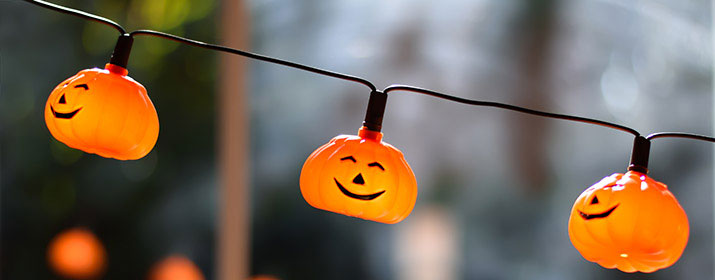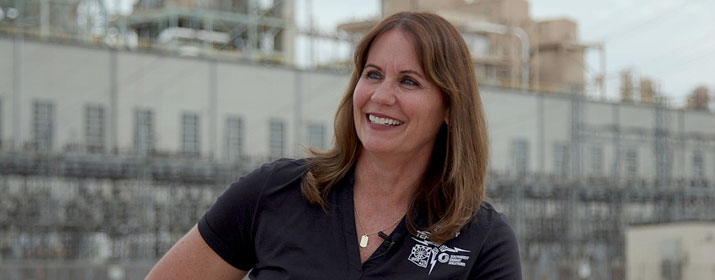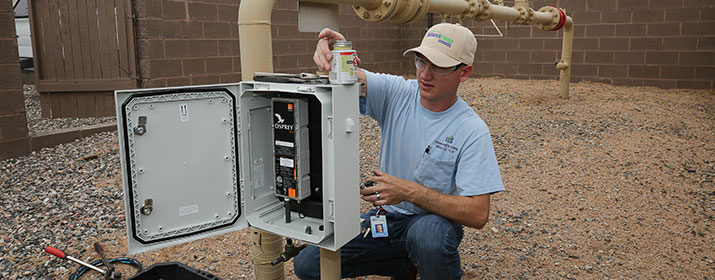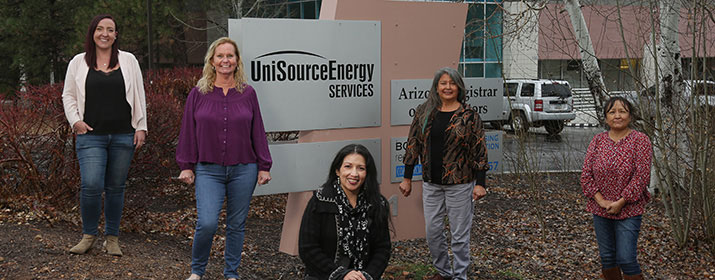
With cooler weather on the way, now is a good time to consider making your home more energy efficient, cozy and comfortable this winter.
“You don’t need to spend a lot of money or time to gain efficiencies,” said Edith Garcia, Program Manager for UniSource Energy Services’ Residential Energy Efficiency Programs. “There are some simple, inexpensive things you can do to save energy. In fact, some are just slight behavioral changes that cost nothing.”
1. Maintain the heating system. No one wants their furnace to fail or perform poorly when it’s cold outside. To avoid this, have a professional inspect, test and clean your furnace annually to prevent any problems. Check UniSource’s list of approved contractors, which usually offer both heating and cooling services, to find a reputable company.
2. Change filters regularly. “One of the best things homeowners can do to keep their heating and cooling system working efficiently is to change filters regularly or as recommended by the manufacturer,” Garcia said. Clogged filters restrict airflow, forcing the unit to work harder and use more energy.
3. Cover drafty windows. Window coverings can really improve comfort and help you save energy to reduce bills. Installing thermal curtains, tight-fitting insulating drapes or shades helps keep the heat in and cold drafts out.
4. Let in the warmth. Arizona boasts an annual sunshine rate of 85.8 percent. This almost endless supply of sunshine allows us to let the sun’s rays naturally warm our homes in winter. Open south-facing curtains and blinds during the day to let sunshine warm your home, and then close them at night to keep out the chill.
5. Find and seal leaks. Even the newest and most modern homes have pesky leaks, allowing cold air to enter your home. These are usually cracks and joints found around doors, windows, electrical outlets, piping, recessed lights and cabinets.
“A professional can conduct a door blower test, or you can do it yourself with a few simple methods,” Garcia said. “Shine a flashlight at night over potential gaps and have another person outside let you know if they see a light beam. You can also use a burning incense stick to see if the smoke wavers or is drawn in or out of your home in certain places.” You also may be able to feel cold drafts by holding a damp hand near suspected leaks.
Leaks can be sealed with caulk, weatherstripping, door sweeps or expandable spray foam. “Caulk and weatherstripping are appropriate for windows and doors, while expandable foam is most suitable for tight, hard-to-reach areas or larger gaps between 1-3 inches,” said Garcia.
6. Check the insulation. If insulation is less than the recommended minimum, you may need to add more. Check the insulation in attics, walls, under the living area flooring and crawlspace. Sometimes insulation settles over time to create thinner spots. Learn more about how to select the right type of insulation for different spaces.
7. Insulate the water heater. Water heating accounts for about 20 percent of a home’s energy usage. According to energy.gov, wrapping the tank with a cover or blanket can reduce standby heat loss by 25-45 percent and save up to 16 percent in water heating costs. Insulating blankets cost about $50, an affordable investment in light of the potential savings.
8. Close fireplace dampers. Fireplaces are great for taking the chill out of the air on colder days. Just don’t forget to close the damper when the fireplace isn’t being used. Otherwise, heated air will go up the chimney. You can lower the thermostat when using the fireplace because the fire is supplementing the heat from your furnace.
9. Change ceiling fan rotation. With cooler weather arriving, remember to adjust the rotation of ceiling fans to clockwise. Look for a switch on the motor that will change the blade rotation direction. Since warm air rises, the clockwise blades push warm air downward and pull cool air upward. While this doesn’t actually warm the room, it will feel warmer closer to the floor.
10. Invest in a smart thermostat. Many smart thermostats are loaded with features that make it easy to save energy and money. They “learn” your preferred heating and cooling schedule, sense occupancy and can be controlled remotely using any smart device. On average, smart thermostats can save homeowners up to 12 percent on heating bills and 15 percent on cooling bills.
Low-income customers might qualify to receive some of these upgrades for free through our Weatherization Assistance program in partnership with local agencies.






